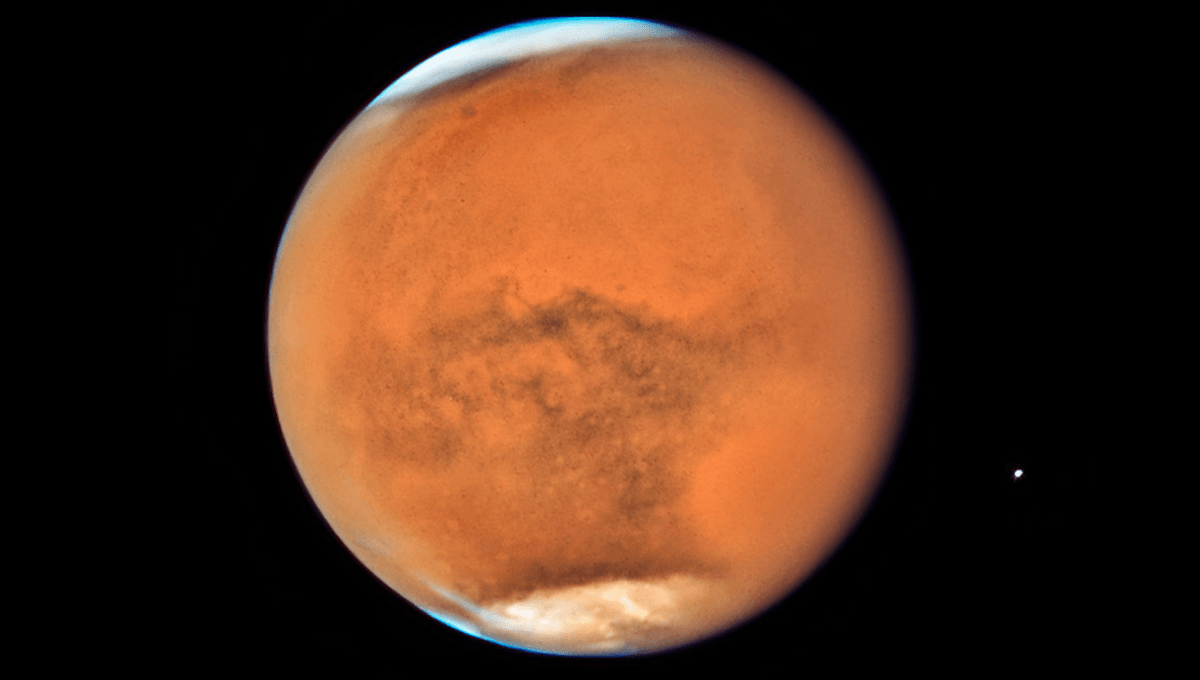
Exploring another planet is difficult, but NASA’s Institute for Advanced Concepts (NIAC) has one solution that might make it a little easier: a swarm of robot bees.
NASA has already flown a robot on Mars, the Ingenuity helicopter, which sent its final message back to Earth earlier this year. The robot performed better than the US space agency could hope for, making 72 flights over 1,000 Martian days, when it was only planned to perform five.
While we may have mastered flight on Earth, flying on another planet poses a tougher challenge.
“The Red Planet has a significantly lower gravity – one-third that of Earth’s – and an extremely thin atmosphere with only 1 percent the pressure at the surface compared to our planet,” NASA explained in a press release when Ingenuity made its first flight. “This means there are relatively few air molecules with which Ingenuity’s two 4-foot-wide (1.2-meter-wide) rotor blades can interact to achieve flight.”
In this low-density atmosphere, however, a swarm of robots taking inspiration from nature could thrive.
“Migrating flying animals showcase astonishing long-range flights, disproportionate to their sizes. For example, Monarch butterflies (wingspan: 10 cm [4 inches]) fly 4,000 km [2,485 miles] from North American to central Mexico, which has been reported to fly through thin air as high as 11,000 feet [3,353 meters]. The wandering albatross (wingspan: 3.1 m [10 feet]) can circumnavigate Antarctica 2-3 times, covering 120,000 km [74,565 miles],” the Kanglab at the University of Alabama in Huntsville (UAH) explains of the inspiration behind the Marsbee project.
“While the aerodynamic mechanism behind these long-range flights is currently unknown, recent studies have shown that the use of lightweight flexible wings leads to energy efficient flapping wing motions. Also, the compliant nature of the flexible wings is surmised to aid soaring and gliding in the unsteady atmosphere.”
The Marsbees – about the size of a bumblebee but with cicada-sized wings – would be fitted with sensors and communication devices, fly around collecting data, and return to a rover acting as their base. The robots would be designed with energy efficiency in mind, with a predicted flight time of 16 minutes with commercially available battery technology.
“Our preliminary numerical results suggest that a bumblebee with a cicada wing can generate sufficient lift to hover in the Martian atmosphere,” Associate Professor at UAH, Chang-kwon Kang, explains on the NIAC website. “Moreover, the power required by the Marsbee will be substantially reduced by utilizing compliant wing structures and an innovative energy harvesting mechanism. “
While performance on the planet is key, another appeal of the project is the low weight of Marsbees in comparison to other robots.
“The smaller volume, designed for the interplanetary spacecraft payload configuration, provides much more flexibility,” Kang explained. “Also, the Marsbee inherently offers more robustness to individual system failures.”
When Ingenuity failed, we were left without a flying robot on Mars (an unacceptable state of being), but if one bee fails you still have the rest of the swarm.
Source Link: NASA Wants To Send A Swarm Of "Marsbees" To The Red Planet